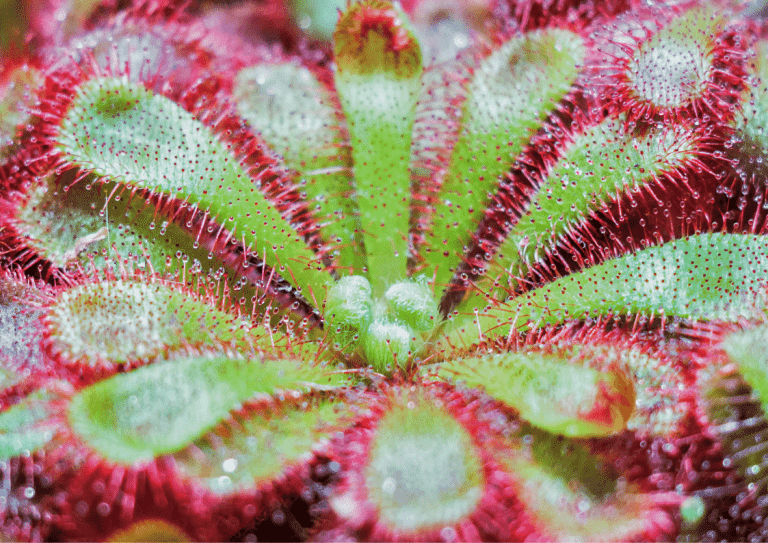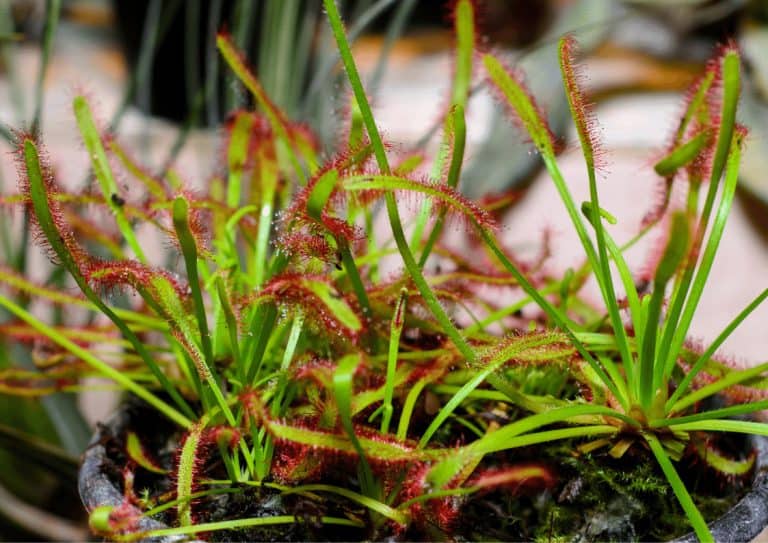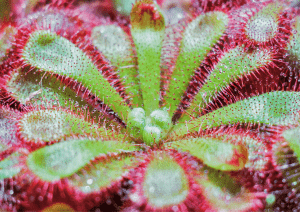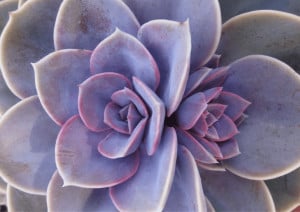Which Carnivorous Plant Is Best To Get Rid Of Fruit Flies?
- Lakeisha Ethans
- August 23, 2022
If you buy something using the retail links in our articles, sometimes we earn a small affiliate commission. This does not impact the products we recommend.
Fruit flies are tiny insects, which makes them adept at escaping from common carnivorous plants like Venus Fly Traps. In addition, some of these insects can break free from the confines of those types of leaves. Unfortunately, fruit flies also often arrive in droves, meaning that plants with limited diets and too few traps don’t act as sufficient methods of controlling their numbers. So what plants, then, do the trick?
The best carnivorous plant to get rid of fruit flies is the Sundew (Drosera sp.). The plant is adept at catching numerous small insects at once using sticky mucus that attracts invertebrates like flies. Drosera capensis with its long narrow leaves and Drosera rotundifolia with its large surface area are two particularly effective species.
The Sundew is by no means the only plant that can help get rid of fruit flies, but it’s undoubtedly one of the most effective out of a group of plants that aren’t known for being an ultra reliable form of pest control for people dealing with insect infestations.
This post discusses the mechanism Sundew plants use to capture fruit flies, and some other things you need to know about choosing carnivorous plants for the purpose of managing fruit flies.

How does a Sundew plant catch fruit flies?
The Sundew is not one individual type of plant but a very large carnivorous plant genus with nearly 200 species. These plants can be found on every continent except for Antarctica, but they live in a particular type of habitat in the natural world.
Sundew tentacles are coated with raised mucilaginous glands on small stalks. These glands secrete sticky mucus that smells sweet, attracting insects such as fruit flies. When flies land on the modified leaves they become stuck to the stalked glands which then begins to curl closed. Unable to escape, the flies suffocate to death, which takes about 15 minutes.
Once a fruit fly or other insect has been captured by a Sundew, the mucilage releases enzymes that help to dissolve and digest the prey, breaking it down into its nutritional value and nothing more. Then, the Sundew uses sessile glands to absorb the resulting mixture, absorbing nutrients with ease that can then be transported throughout the plant.
The trapping of fruit flies and other bugs is assisted by the Sundew’s ability to move its “tentacles” or its leaves. These leaves are highly sensitive and respond quickly to contact from prey. When an insect lands on this plant, the tentacle-like leaves slowly bend inward over a period of 30 mins, thus pushing the prey against numerous mucous-covered glands at once.
This is partially why Sundew plants are so effective at eradicating fruit flies. Even just the lightest touch from these insects can trigger movement, though some species of Sundew require additional stimulation.
Some larger species of this plant may also not respond as easily to the lightness of a fruit fly. On the other hand, some smaller species may be too small to have sufficient capacity for a large number of fruit flies. As such, choosing the right species is paramount to ensuring the effect you want.
How many fruit flies does a Sundew plant need to eat?
Lots of carnivorous plants require minimal food to survive, as their prey are mineral supplements for the lack of richness of their native soils. Some plants of this variety may even only need one insect per week or a couple each month. Sundew plants, however, are not in the same boat.
Sundew plants have big appetites and need to consume prey often to stay at peak health. Some species even need one insect per day at minimum, and anything less can affect them significantly and eventually lead to death.
This is why Sundew plants are a good option for getting rid of fruit flies – they have plenty of leaves that allow them to catch lots of these insects at once (see the below video for a demonstration).
In addition, full absorption of prey is relatively quick at between 4-6 days. In an experiment a 1.25cm cube of egg white was dissolved completely within only 50hrs!
This means having a small collection allows them to be quite efficient as supplemental pest control.

Are Sundews difficult to care for?
Some types, such as the Drosera Natalesis or the Cape Sundew, are fairly popular beginner-friendly species, while others would be better suited for more experienced plant owners. With that being said some generalizations can be made regarding the care requirements for the Drosera genus.
Sundew plants are bog plants at heart, which means they favor conditions that mimic their natural environment. This means moist soil, warm temperatures, moderate-to-high humidity, and a good deal of direct sunlight.
All Sundew plants love the outdoors, but some species can easily grow indoors. You can technically get most plants of the genus to grow as houseplants, but you’ll have to take extra care to meet the plant’s light needs by placing it in a window where they can garner several hours of daily sunlight.
Sundew plants get their minerals from the insects that they consume. As such, they shouldn’t be fertilized, and the water used for their hydration should be either rainwater or distilled water. This prevents excessive mineral consumption that can lead to health problems in the plant.
What other carnivorous plants can get rid of fruit flies?
Many other plants can successfully capture fruit flies aside from Sundews, and most do a fairly good job.
Tropical Butterworts come a close second to Sundew plants when it comes to eradicating fruit flies. Like Sundews, they lure insects via leaves covered in glands that excrete sticky, sweet substances. When insects are coaxed in by the shiny mucous, they adhere to the leaves and are slowly digested and consumed.
Tropical Butterworts usually only successfully capture prey with larger wing surfaces, but they’re quite capable of securing tiny fruit flies. Primarily growing in humid areas, the plant can be grown indoors and easily capture tons of little bugs. Unfortunately, they can be somewhat hard to find, but there are a few reputable online sellers that may stock the plant.
The Nepenthes genus of plants, also known as monkey cups or tropical pitcher plants, is another group of species capable of catching fruit flies. The unique flora has a special champagne flute-shaped pitcher trap filled with a highly effective trapping fluid.
Nepenthes plants attract prey with their nectar, which brings insects into their pitchers. The upper portion is very slippery, forcing insects to fall, and the lower portion begins to dissolve, digest, and absorb prey with ease. While these plants can capture very large prey, they work well for fruit flies because the fluid traps insects so powerfully that it even works when diluted.
Round up
Sundew plants are great for catching fruit flies because their traps can capture numerous flies at once, have a large appetite, and can successfully cause even very small flies to get stuck.
Of course, Sundews aren’t the only carnivorous plant that works for fruit fly control. Tropical Butterworts and Nepenthes plants are great options, too. But, ultimately, if you want a carnivorous plant that can get rid of fruit flies for you, you have a fair few options to choose from. As long as a plant can catch very small insects easily – and a lot of them at once – it’ll do the trick.

Lakeisha Ethans
Houseplant Writer
Mother to two humans and hundreds of plant babies. Lakeisha uses her 15 years of experience as a content writer to specialise in simplifying what you need to know to grow and care for all indoor plants.
Similar Posts
Which Carnivorous Plant Is Best To Get Rid Of Fruit Flies?
Fruit flies can be hard to catch, as their small size makes them elusive to many common insect predators. What carnivorous plants can get the job done?
The Secret To Cleaning Succulents With Farina
Removing fragile farina from a plant leaves it open to damage, so how can you properly and safely clean your succulent?



